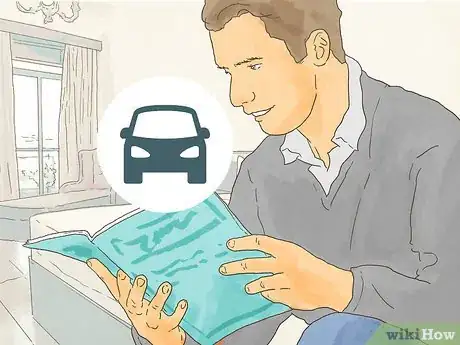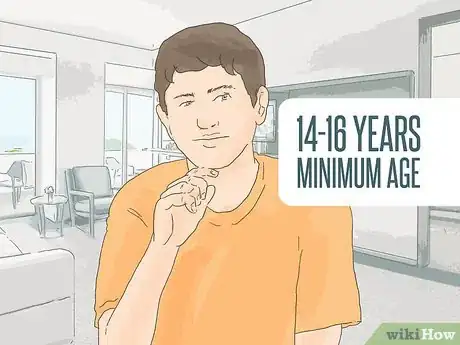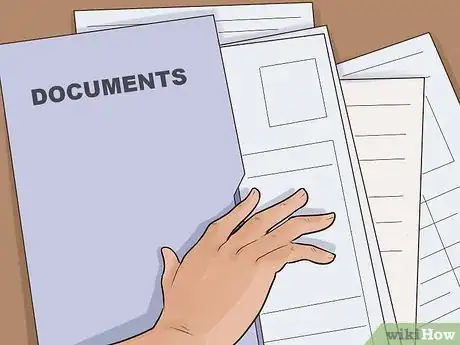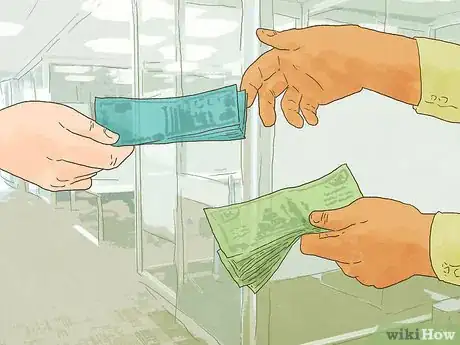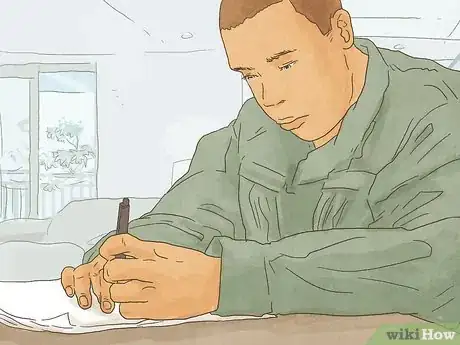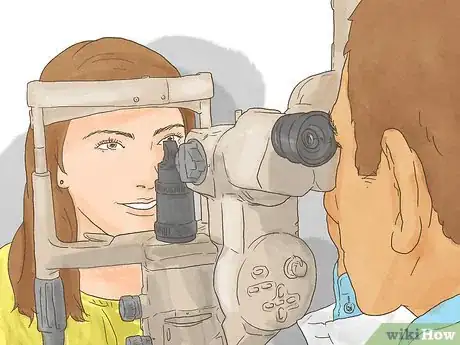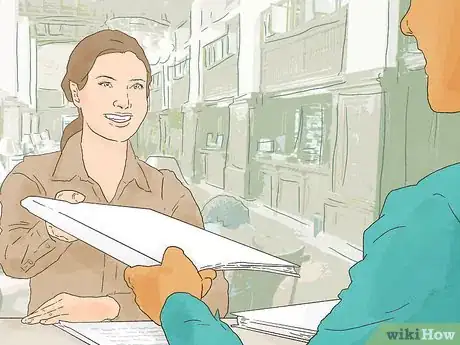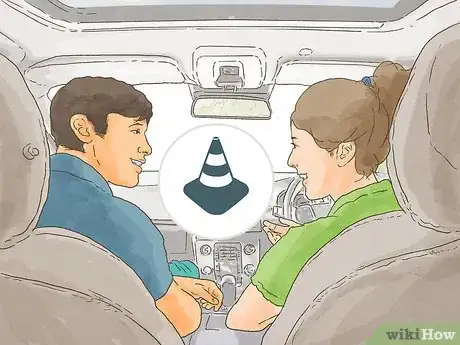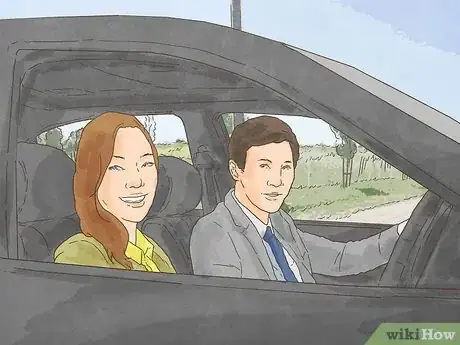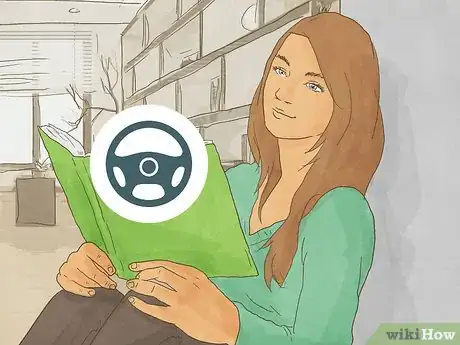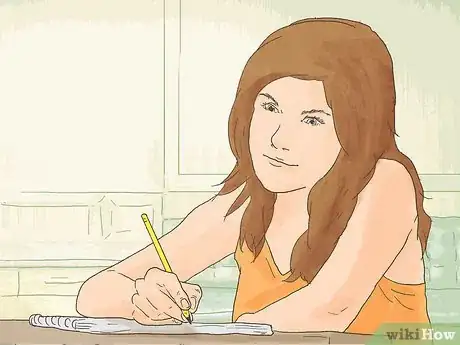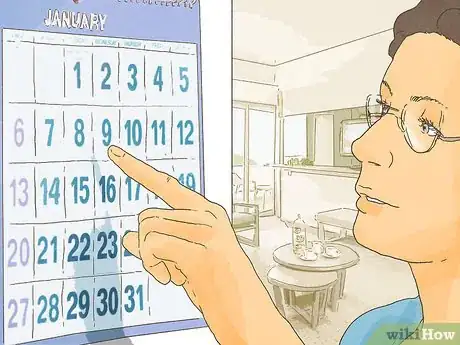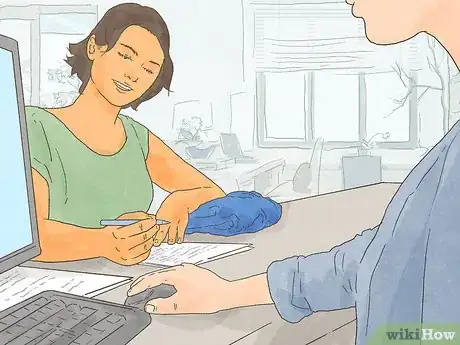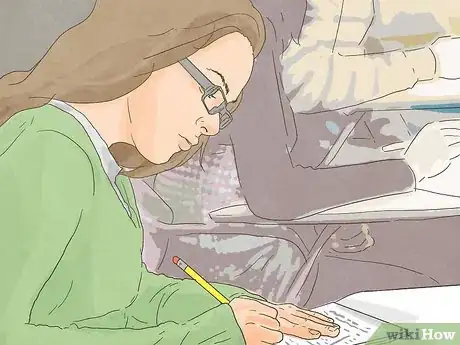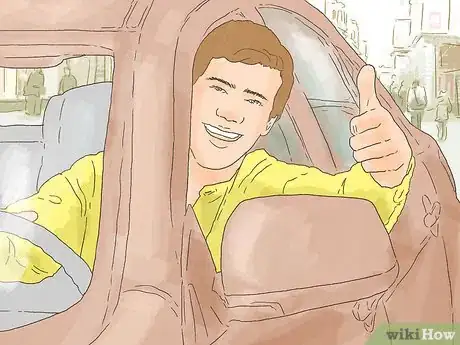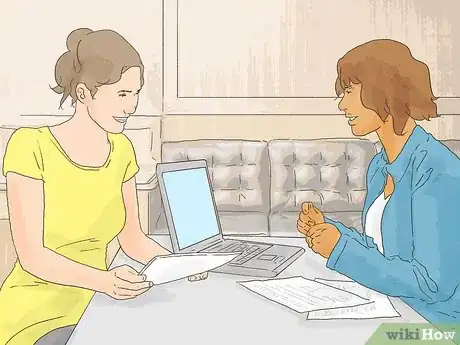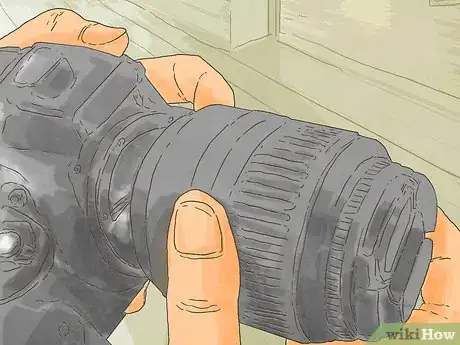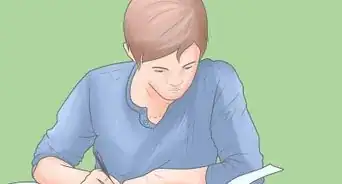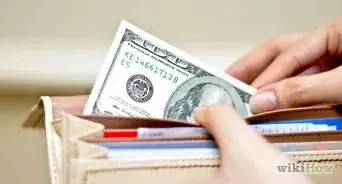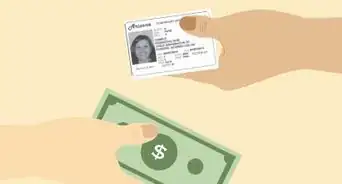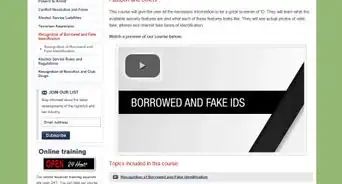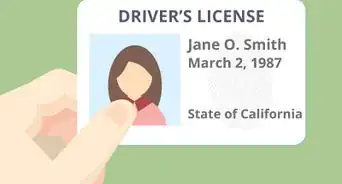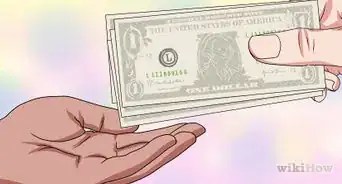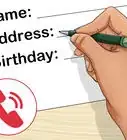This article was co-authored by Jacqueline Regev and by wikiHow staff writer, Jennifer Mueller, JD. Jacqueline Regev is a Driving Instructor and the Founder & CEO of Bubble of Safety Driving School. With over 20 years of education experience, she specializes in encouraging people to develop their skills to become safe and courteous drivers. Jacqueline earned a Bachelor's Degree from UCLA and an MA from Chapman University. She is also pursuing a PhD from UC Santa Barbara.
There are 10 references cited in this article, which can be found at the bottom of the page.
wikiHow marks an article as reader-approved once it receives enough positive feedback. In this case, 93% of readers who voted found the article helpful, earning it our reader-approved status.
This article has been viewed 988,987 times.
You must have a driver's license to legally operate a motor vehicle in the United States. If you are new to driving, start with a learner's permit. Take your time and practice, and schedule your appointment for your driver's test when you're ready. Driver's licenses are issued by the individual states, so rules vary. You typically must pass a written, driving, and vision test before you can get your driver's license.[1]
Steps
Getting Your Learner's Permit
-
1Read the driver's handbook. You will have to take a written test that will be based on your knowledge and understanding of the rules and regulations outlined in your state's driver's handbook.[2]
- You can pick up a print copy of your state's driver's handbook at your local DMV. Most states also have their driver's handbooks available online. Download the most recent version from your state's official DMV website – you may find similar copies elsewhere online, but they may not be the most recent version.
- The driver's handbook includes all of the rules of the road that you'll need to know if you want to be a safe driver. You're responsible for knowing all the rules, even though you may not be tested on all of them.
-
2Evaluate the qualifications for a learner's permit. If you're under the age of 18, most states require you to get a learner's permit and hold it for a minimum period of time (typically anywhere from 6 months to a year) before you can get a full license.[3]
- You must be a minimum age to get a learner's permit – anywhere from 14 to 16 years old, depending on the state.
- Drivers under 18 years of age must obey all graduated driver license laws which vary from state to state.
- Some states, such as California, require that you complete driver's education courses before you can apply for a learner's permit.[4]
Advertisement -
3Provide proof of your identity and residency. To get a learner's permit, you must show legal documents to verify who you are and where you live. The specific documents allowed vary by state.[5]
- Proof of identity typically includes a birth certificate, state-issued I.D. card, or passport.
- Documents to prove residency include utility bills or bank statements in your name with your home address. If you're under 18, you can use a school transcript or letter, and can also get a parent or guardian to vouch for you.[6]
- If you're under the age of 18, many states also require proof that you are attending school.
-
4Pay your testing and permit fees. Before you can take the written test and get your permit, you'll have to pay a fee. The amount of the fee varies among states, but typically is under $100. In some states you may have to pay the fee when you schedule an appointment to get your permit.[7]
- Find out what methods of payment are accepted if you're paying your fees in person. Some DMVs only take a check or money order.
-
5Take a written test. Before you can get a learner's permit, most states require you to take a basic knowledge test based on the traffic rules and regulations discussed in the state driver's handbook.[8]
- If you need a hearing interpreter, or need to take the written test in a language other than English, check with the DMV before you go to take the test to make sure accommodations can be made.
- The learner's permit test typically focuses on your knowledge of signs and basic traffic rules such as using your turn signal and passing on the left.
- While it's possible you could pass a learner's permit simply from having observed other drivers for years, it's still wise to read through the driver's manual at least once or twice. Things other drivers do habitually may not follow the exact letter of the law.
-
6Pass the vision test. You must be able to see to operate a motor vehicle. If you cannot pass the vision test, you must get glasses or contact lenses to correct your vision before you will be allowed to get your learner's permit.[9]
- If you already wear glasses or contact lenses, plan to wear them when you go to get your permit. The driver's license examiner will add an "endorsement" to your permit that states you wear corrective lenses. If you get pulled over while driving and you're not wearing glasses or contacts, your license to drive isn't considered valid.
- If you have a light prescription and only wear glasses occasionally, you may want to try to pass the test without them. That way if you happen to get pulled over and you don't have them, you won't risk getting cited for driving without a license.
-
7Get your permit. Provided you pass the written and vision tests and all of your documents are in order, an examiner will take your photo and issue your new learner's permit. You also may receive information listing the restrictions of driving on a learner's permit.[10]
- Pay attention to how long your learner's permit is valid. If your learner's permit is about to expire and you still don't feel ready to take the driver's test to get your full license, you typically can get it renewed.
- Depending on how old you are, you may be required to have a learner's permit for a certain period of time before you can get your full license.
- Some states also may require you to show that you've logged a certain number of practice hours before you will be allowed to take the driver's test.
- If you are under the age of 21, your permit will be shaped vertically. If you are 21 years of age or older, your permit will be shaped horizontally. This lets someone know if you are of legal age to buy alcohol or tobacco.
Learning to Drive
-
1Take a driver's education course. If you're a high school student when you get your learner's permit, you may be able to take a driver's education class through your school for free or for a reduced rate compared to private driving lessons.[11]
- If you're an adult, it still may be in your best interest to take formal driving lessons, especially if you've never driven a car before. Even if you're already licensed in another country, driving lessons can help you practice with American driving laws that may be different from those in your home country.
- Some states may require you to take other programs, such as drug and alcohol traffic awareness courses. Check these requirements when you get your permit.[12]
-
2Choose someone to help you practice. You typically are required to have a licensed driver in the car with you at all times if you're driving on a learner's permit. If you are under 18, your passengers typically must be over 21 and have had their license for several years.[13]
- Even if you've taken a driver's education course, you still want to get plenty of practice before you take your road test to get your full license. Driving with the DMV examiner for the test will likely make you nervous, so you want to be comfortable behind the wheel.
- Ideally, you want someone who is patient and has been driving for a long time, such as one of your parents or an older family member.
-
3Study the driver's handbook. Even if you passed a written test already to get a learner's permit, you'll probably still have to take a written test to get your full license. This test will be based on all the rules and regulations in the handbook.[14]
- The written test to get a full license typically is longer and more in-depth than the test you took to get a learner's permit.
- You may want to get a friend or family member to help you by quizzing you or asking you about the rules in the handbook.
-
4Use practice written tests. Most states provide practice tests that you can use to study for the written driver's license test. There may be a practice test in the back of the handbook, or available for download from your state's DMV website.[15]
- Some states have created smartphone apps that you can download for free. These apps are interactive and give you practice questions as well as scoring and telling you the areas where you can improve.
- Taking practice tests is a good way to practice the test settings. It can help people overcome anxiety.
- It helps re-familiarize oneself with the key content covered in the test.
Getting Your Driver's License
-
1Schedule an appointment for your driving test. In some rural areas, you may be able to just walk into the DMV whenever you're ready to take your driving test. But in most cases, it's best to schedule an appointment, even if it's not required, to minimize your wait time.[16]
- Find out if you are expected to bring your own car or if you'll take the test on a DMV vehicle. Some states require you to take the driving test in the car you plan to drive.
- Make sure a licensed driver goes with you. If you don't pass the tests and get your license, you won't be able to drive yourself home.
-
2Complete an application. Each state has an official form you must complete to get a full driver's license. You may be able to download the form from your state's DMV website. You also can fill out a paper form at the DMV on the day of your test.[17]
- The application acts for basic identification information, including your full name and address. It also may ask for descriptive information, such as your height and weight.
- If you are under the age of 18, typically your parent or guardian also must sign your application.
-
3Submit all documents and fees. You must bring original documents that prove your identity as well as your place of residence. If you got a learner's permit, you can use that as 1 form of ID.[18]
- If you do have your learner's permit, find out if you will still be expected to bring other original documents, such as your birth certificate. You don't want to carry these kind of documents around with you unless it's absolutely necessary.
- In some states you'll need to bring proof of your driving time on your learner's permit or a certificate from a driver's education course. If you're under 18, you also may have to bring proof that you are attending school.
- The fees for a driver's license vary among states, but generally will be under $100. You also may have to pay an additional fee to get your driving test.
-
4Take the written test. The written test for your full license typically is longer and more comprehensive than the written test you took to get your learner's permit. It may include hypothetical questions to get you to apply the rules of the road to a given set of circumstances.[19]
- In some states you must pass the written test before you can schedule your driving test. In others, you'll take both tests at the same time.
-
5Take your driving test. When you go to the DMV for your appointment, an examiner will go out with you and observe your driving, as well as test various skills. You may be driving on public streets, on a closed course, or both.[20]
- The examiner will be watching that you are obeying all traffic rules, even if you're on a closed course. Remember to obey all traffic lights and signs, and always use your turn signals.
-
6Find out the results of your tests. Typically, the DMV examiner who rode with you will tell you the result of your driving test as soon as it's finished. In fact, you'll typically have a pretty good idea whether you passed or failed before they even tell you.[21]
- If you failed either the written test or the driving test, find out if there's a waiting period before you can take it again, and if you have to pay an additional fee.
-
7Get your picture taken. If you passed all the tests and all your documents are in order, you will be asked to surrender your learner's permit so you can get your full license. You may get a temporary paper ID at the DMV and the real license in the mail.[22]
- You may need to take another vision test before you get your full license. This may be waived if your learner's permit is only a year old or less. Even if you do have to take another vision test, you should have no problem passing it as long as everything has remained the same since you took the test for your learner's permit.
- When you get your license, inspect it carefully to make sure everything is spelled correctly and there are no mistakes. You typically have a limited window to get mistakes on licenses corrected for free.
Expert Q&A
-
QuestionCan you get your license without driver's education?
 Jacqueline RegevJacqueline Regev is a Driving Instructor and the Founder & CEO of Bubble of Safety Driving School. With over 20 years of education experience, she specializes in encouraging people to develop their skills to become safe and courteous drivers. Jacqueline earned a Bachelor's Degree from UCLA and an MA from Chapman University. She is also pursuing a PhD from UC Santa Barbara.
Jacqueline RegevJacqueline Regev is a Driving Instructor and the Founder & CEO of Bubble of Safety Driving School. With over 20 years of education experience, she specializes in encouraging people to develop their skills to become safe and courteous drivers. Jacqueline earned a Bachelor's Degree from UCLA and an MA from Chapman University. She is also pursuing a PhD from UC Santa Barbara.
Driving Instructor In some states, it is possible to get a driver's permit at the DMV when you're over 17 or 18 just by passing the theory/content examination. If you're younger than that, you may be required by law to take a theory course before sitting for their permit test at the DMV. Since this requirement varies by state, contact your local DMV to check that information.
In some states, it is possible to get a driver's permit at the DMV when you're over 17 or 18 just by passing the theory/content examination. If you're younger than that, you may be required by law to take a theory course before sitting for their permit test at the DMV. Since this requirement varies by state, contact your local DMV to check that information. -
QuestionHow do I get a permit if I already possess an international driver's license from my home country?
 Lahaina Araneta, JDLahaina Araneta, Esq. is an Immigration Attorney for Orange County, California with over 6 years of experience. She received her JD from Loyola Law School in 2012. In law school, she participated in the immigrant justice practicum and served as a volunteer with several nonprofit agencies.
Lahaina Araneta, JDLahaina Araneta, Esq. is an Immigration Attorney for Orange County, California with over 6 years of experience. She received her JD from Loyola Law School in 2012. In law school, she participated in the immigrant justice practicum and served as a volunteer with several nonprofit agencies.
Attorney at Law Each state has their own rules. Check the DMV rules for the state in which you are now living.
Each state has their own rules. Check the DMV rules for the state in which you are now living. -
QuestionDo I need to be insured before I take the driving test at the DMV?
 Lahaina Araneta, JDLahaina Araneta, Esq. is an Immigration Attorney for Orange County, California with over 6 years of experience. She received her JD from Loyola Law School in 2012. In law school, she participated in the immigrant justice practicum and served as a volunteer with several nonprofit agencies.
Lahaina Araneta, JDLahaina Araneta, Esq. is an Immigration Attorney for Orange County, California with over 6 years of experience. She received her JD from Loyola Law School in 2012. In law school, she participated in the immigrant justice practicum and served as a volunteer with several nonprofit agencies.
Attorney at Law It varies by state, but typically before being allowed to take a road test to qualify for your driver's license you'll need to be required to show proof of insurance. Many car insurance policies will cover permissive drivers.
It varies by state, but typically before being allowed to take a road test to qualify for your driver's license you'll need to be required to show proof of insurance. Many car insurance policies will cover permissive drivers.
References
- ↑ http://www.immihelp.com/newcomer/getting-drivers-license-photo-id.html
- ↑ http://www.immihelp.com/newcomer/getting-drivers-license-photo-id.html
- ↑ https://www.idrivesafely.com/driving-resources/how-to/get-learners-permit/
- ↑ https://www.dmv.ca.gov/web/eng_pdf/dl600.pdf
- ↑ http://www.mva.maryland.gov/drivers/rookie-driver/general-learners.htm
- ↑ https://www.dmv.ca.gov/portal/dmv/detail/dl/dl_info#Residency%20Documents
- ↑ http://www.ct.gov/dmv/cwp/view.asp?a=805&q=514952
- ↑ http://www.mva.maryland.gov/drivers/rookie-driver/general-learners.htm
- ↑ http://www.mva.maryland.gov/drivers/rookie-driver/general-learners.htm
- ↑ http://www.mva.maryland.gov/drivers/rookie-driver/general-learners.htm
- ↑ http://www.immihelp.com/newcomer/getting-drivers-license-photo-id.html
- ↑ https://www.idrivesafely.com/driving-resources/how-to/get-learners-permit/
- ↑ http://www.mva.maryland.gov/drivers/rookie-driver/general-learners.htm
- ↑ http://www.immihelp.com/newcomer/getting-drivers-license-photo-id.html
- ↑ https://dmv.ny.gov/driver-license/drivers-manual-practice-tests
- ↑ http://www.dps.texas.gov/DriverLicense/ScheduleTest.aspx
- ↑ https://dmv.ny.gov/forms/mv44.pdf
- ↑ http://www.immihelp.com/newcomer/getting-drivers-license-photo-id.html
- ↑ http://www.immihelp.com/newcomer/getting-drivers-license-photo-id.html
- ↑ http://www.immihelp.com/newcomer/getting-drivers-license-photo-id.html
- ↑ http://www.immihelp.com/newcomer/getting-drivers-license-photo-id.html
- ↑ https://www.dmv.ca.gov/portal/dmv/?1dmy&urile=wcm:path:/dmv_content_es/dmv/dl/dl_info
About This Article
If you live in the USA and you want to get your driver’s license, get a learner’s permit and practice driving with a licensed adult. You should also study the driving handbook for your state. When you’re ready to take the test, call the DMV and schedule an appointment, and ask what documents you need to bring with you, and how much the fees will be. When you get to the DMV, fill out your application, take the written test, and pass your driving test, where you will navigate a course with an instructor. After that, take your picture. Once you have your new ID in hand, you’re a licensed driver! Keep reading to learn how to get your learner’s permit if you need one!
